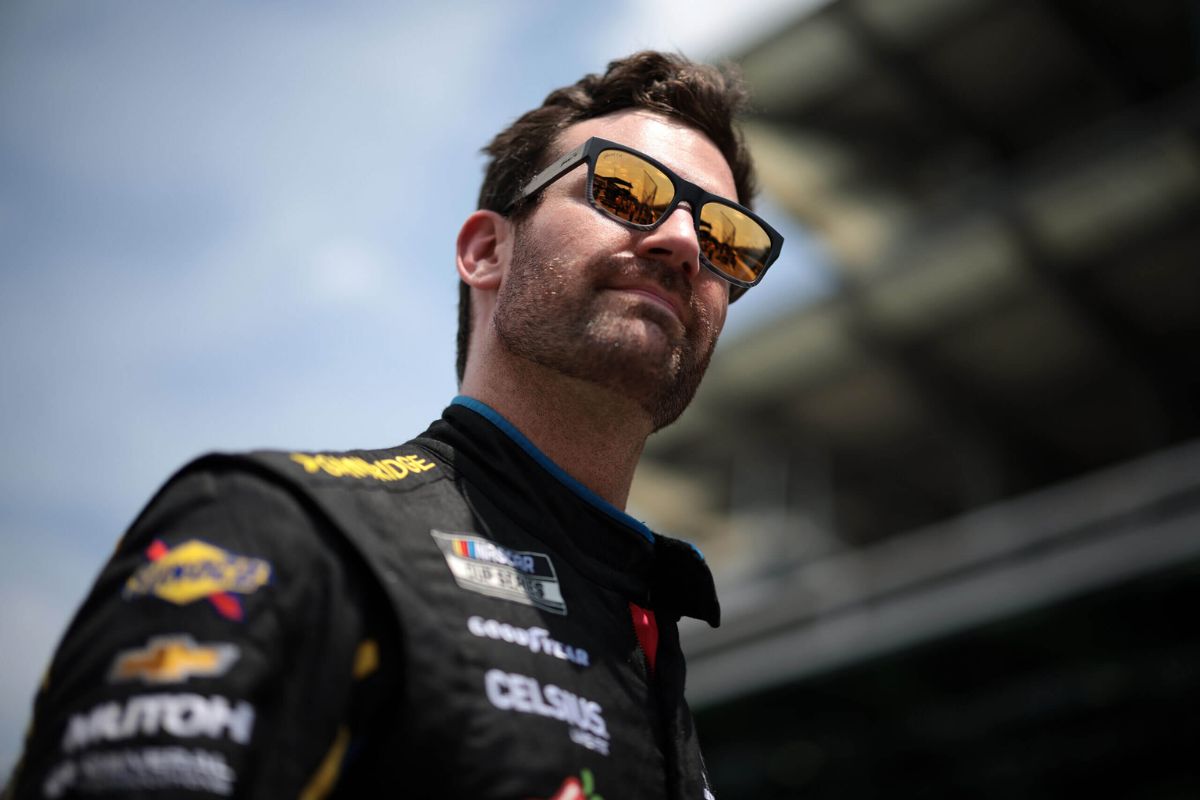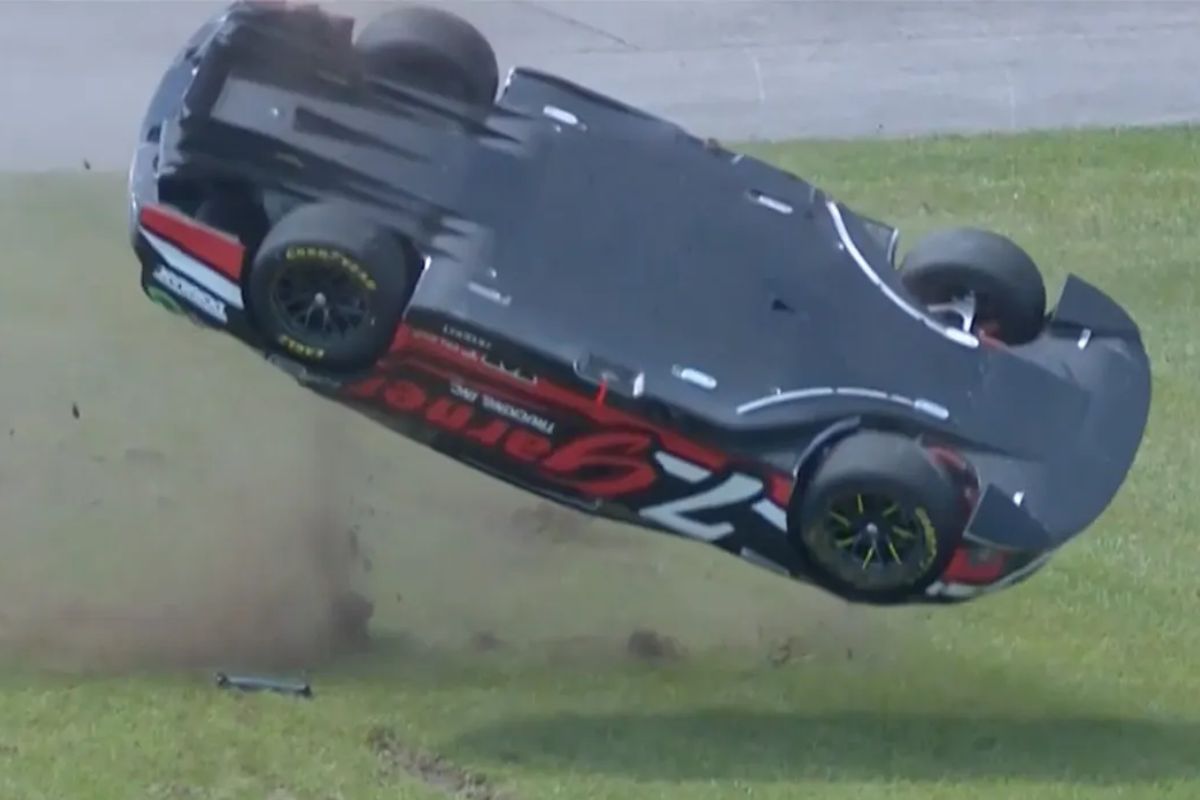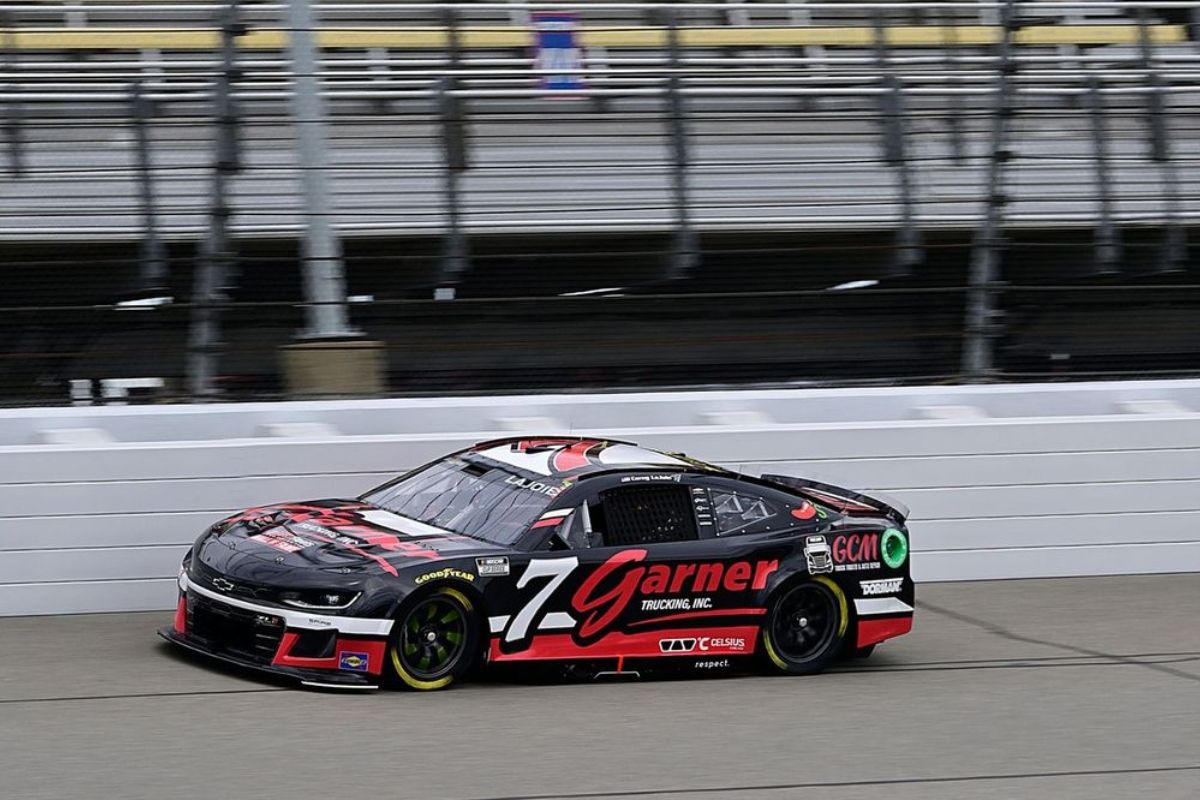Dale Jr.’s Nightmare Becomes Reality: Corey LaJoie‘s recent airborne crash at Michigan has not only reignited fears surrounding driver safety in NASCAR but has also resurrected the haunting memories of Dale Earnhardt Jr.‘s own traumatic experiences with similar incidents. This event serves as a critical crossroads for NASCAR, prompting a much-needed evaluation of existing safety protocols and the sport’s historical context regarding airborne accidents. As the industry struggles with the implications of this crash, the question remains: can NASCAR effectively balance the thrill of racing with the paramount need for driver safety?
Key Highlights
- Corey LaJoie’s flip during the Michigan race reignited concerns over driver safety and the risks associated with high-speed NASCAR events.
- Dale Earnhardt Jr.’s past experiences with airborne crashes highlight the psychological impacts and ongoing discussions about safety in NASCAR.
- NASCAR’s response to LaJoie’s crash includes implementing new safety measures, such as the Right Side Rear Window Air Deflector to prevent future incidents.
- Historical incidents, including Earnhardt Jr.’s, remind the NASCAR community of the need for continuous improvement in safety protocols and vehicle stability.
- The legacy of past tragedies motivates NASCAR to prioritize driver safety while maintaining the thrill of racing, addressing concerns raised by LaJoie’s flip.
LaJoie’s Airborne Crash and Immediate Reactions
In NASCAR, few events elicit as intense a response as an airborne crash, and Corey LaJoie‘s occurrence at Michigan was no exception. The incident, characterized by LaJoie’s No. 7 Chevy flipping upside down, drew immediate attention and concern from fans and officials similarly. Such high-impact moments serve as striking reminders of the inherent dangers in motorsport, where speed and precision are paramount. As LaJoie’s car took flight, the collective gasp from the audience highlighted the gravity of the situation.
Veteran driver Dale Earnhardt Jr.’s nonchalance in the aftermath highlighted a dichotomy in the sport’s culture—while the crash was alarming, it was not unprecedented. Earnhardt Jr. noted that airborne incidents have been a recurring theme in NASCAR’s storied history, suggesting a certain desensitization among seasoned drivers.
However, the immediate reactions from the wider community reflected a growing concern about driver safety, particularly in view of LaJoie’s precarious position. The responsibility for ensuring safety lies mainly with NASCAR’s leadership, as articulated by a senior official in 2020 who stated, “The seat is that driver’s office.”
This emphasizes the necessity of constant vigilance and improvement in safety measures. Following LaJoie’s flip, there will certainly be scrutiny on the regulations governing vehicle design and track safety.

NASCAR’s Response to the Crash
NASCAR’s immediate response to Corey LaJoie’s airborne crash reflects a commitment to enhancing safety protocols in the wake of alarming incidents. Despite Dale Earnhardt Jr.’s dismissal of the event as a mere sporting occurrence, NASCAR recognizes the seriousness of LaJoie’s flip and is taking proactive measures to mitigate future risks. The organization’s decision to mandate the installation of a Right Side Rear Window Air Deflector is a notable step toward improving vehicle stability during spins.
The following table summarizes the key aspects of NASCAR’s response to LaJoie’s crash:
| Aspect | Details |
|---|---|
| Safety Component | Right Side Rear Window Air Deflector |
| Purpose | To increase liftoff speed during spins |
| Testing Method | Wind tunnel tested and quantified |
| Implementation Timeline | Effective starting with the upcoming Daytona race |
This new component mirrors an existing feature on the left side, aiming to standardize safety elements across vehicles. By implementing these changes, NASCAR emphasizes its dedication to driver safety, particularly considering the inherent dangers of high-speed racing.
After evaluating LaJoie flip, NASCAR mandating Right Side Rear Window Air Deflector this weekend. This component increases liftoff speed of the car in the early part of the spin. NASCAR says parts have been wind tunnel tested and quantified. Will be just like one on left side.
— Bob Pockrass (@bobpockrass) August 21, 2024
Moreover, the swift adaptation signals a broader trend within the organization to not only react to accidents but to anticipate and prevent potential hazards. As NASCAR continues to evaluate and refine safety measures, the evolution of its protocols will be essential in maintaining the integrity of the sport while prioritizing the well-being of its drivers.
Historical Context of Airborne Crashes
Airborne crashes have been a recurring and perilous element in NASCAR’s history, highlighting the inherent risks faced by drivers in high-speed environments. The phenomenon of cars lifting off the ground presents not only a challenge to safety protocols but also serves as a striking reminder of the sport’s unpredictability. Numerous instances have occurred over the years, each contributing to the ongoing discourse regarding driver safety and vehicle design.
“I’ve seen that many times in my life. Rusty Wallace – multiple times in his career, Ricky Rudd in the 15 in his historic flip at the Daytona…I’ve had one on the back straightaway in the Helman’s car, I think.” -(dale jr.)
Notable airborne incidents include:
- Rusty Wallace – Frequently experienced flips during his racing career, demonstrating the volatility of stock car dynamics.
- Ricky Rudd – His historic flip at Daytona remains one of the most memorable moments, showcasing the extreme dangers present on the track.
- Dale Earnhardt Jr. – Recalls his own flip in the Helman’s car, illustrating how these events are not isolated but part of a broader narrative.
- Ryan Preece – His 2023 Daytona flip, which saw him tumbling over a dozen times, exemplifies the continued threat of airborne crashes in modern NASCAR.
These incidents reveal a troubling pattern of airborne events, which have persisted despite advancements in technology and safety measures.
As drivers like Corey Lajoie experience these life-threatening moments, the urgency for thorough solutions within NASCAR becomes increasingly paramount.
The historical context of these crashes is not just a record of dangers; it is a call to action for the sport to evolve and protect its athletes more effectively.
Advancements in Safety Measures
Safety in motorsport has seen considerable evolution, driven by the urgent need to protect drivers in high-stakes environments. In the aftermath of tragic accidents that claimed the lives of iconic figures like Dale Earnhardt and Adam Petty, NASCAR underwent a notable transformation in its approach to safety. The sanctioning body recognized the imperative to reduce risks associated with racing, particularly concerning high-impact collisions.
One of the most essential advancements has been the implementation of Steel and Foam Energy Reduction (SAFER) barriers, which have been hailed as one of the most effective safety measures in the racing industry. These barriers are designed to absorb energy from crashes, considerably reducing the forces transferred to drivers during impacts. This innovation has contributed to a remarkable decrease in the severity of injuries sustained in accidents, particularly in the context of airborne crashes.
As Denny Hamlin and Dale Earnhardt Jr. noted in their reflections on recent incidents, NASCAR’s focus has shifted from merely reacting to crashes to proactively addressing vital danger zones within the sport. The risk factor has been considerably lowered compared to the early 21st century, when the sport was grappling with a spate of fatalities.
This evolution in safety measures reflects a broader commitment to driver welfare, ensuring that the thrill of motorsport can coexist with the fundamental necessity of safeguarding those who compete. The advances achieved up to this point highlight a relentless pursuit of improvement, laying the groundwork for a safer future in NASCAR.
Additional Safety Innovations
Numerous extra safety innovations have emerged in recent years, greatly enhancing driver protection during races. Among these, several essential technologies and measures stand out, greatly mitigating risks associated with high-speed collisions.
- HANS Devices: The Head and Neck Support (HANS) device, developed by Dr. Robert Hubbard, is a vital safety feature that prevents rapid head movement during impacts. This innovation has been credited with saving lives, as highlighted by Xfinity veteran Kenny Wallace, who emphasized its life-saving capabilities after a serious crash in 2019.
- Advanced Seat Belts: Modern harness systems have evolved to provide better restraint and stability for drivers, minimizing the potential for injury during severe accidents.
- Roof Flaps: These aerodynamic components help maintain vehicle stability, reducing the risk of flipping and airborne incidents, essential in the aftermath of Corey Lajoie’s harrowing flip.
- Window Nets and Air Deflectors: Window nets offer protection from debris and ejections, while the newly introduced window air deflectors are designed to further secure drivers during airborne wrecks, addressing concerns raised by incidents like those involving Dale Earnhardt Jr.’
“Without the HANS device I would be dead…THANK YOU Dr. Hubbard…(I hit the wall so hard at DOVER) I saw double and a little triple.”-(kenny)
As safety continues to be a primary concern in NASCAR, these innovations demonstrate a commitment to evolving the sport’s protective measures.
The integration of these technologies reflects the ongoing efforts to safeguard drivers, ensuring that the legacy of past tragedies informs future advancements.
News in Brief: Dale Jr.’s Nightmare Becomes Reality
The recent incident involving Corey LaJoie’s airborne crash serves as a critical reminder of the persistent dangers faced by NASCAR drivers. This event not only reignites discussions surrounding driver safety but also emphasizes the necessity for ongoing evaluation and improvement of safety protocols within the sport.
As NASCAR grapples with the balance between maintaining the thrilling essence of racing and ensuring the well-being of its competitors, the commitment to safety must remain paramount in shaping the future of the sport.
ALSO READ: Dale Jr. Calls Out Fans: ‘Quit’ the NASCAR Criticisms Now!


